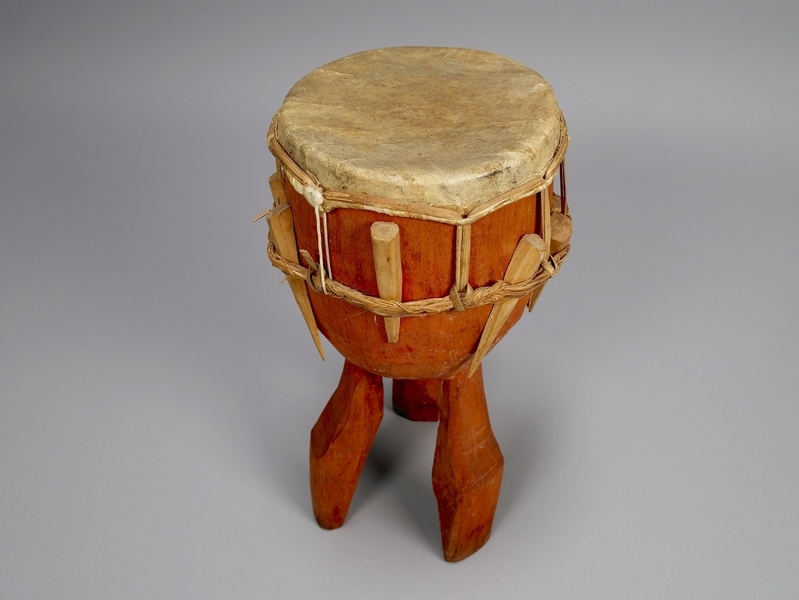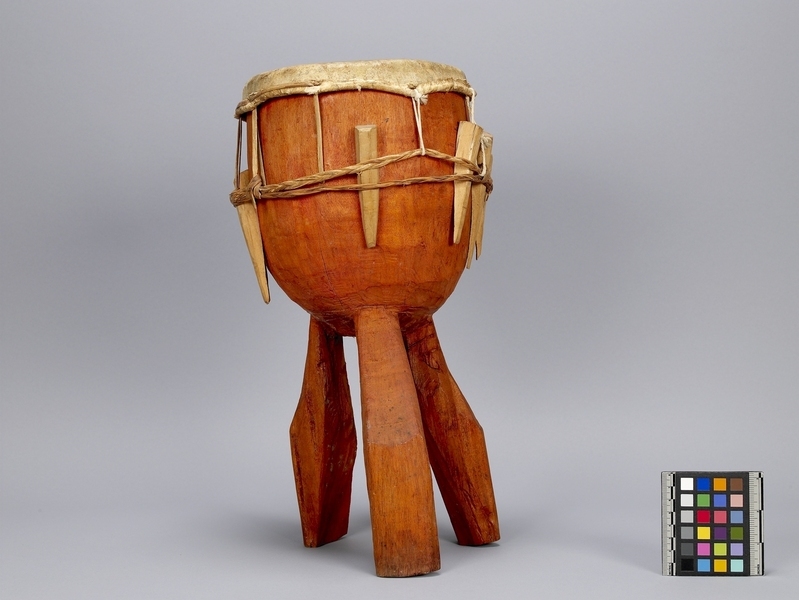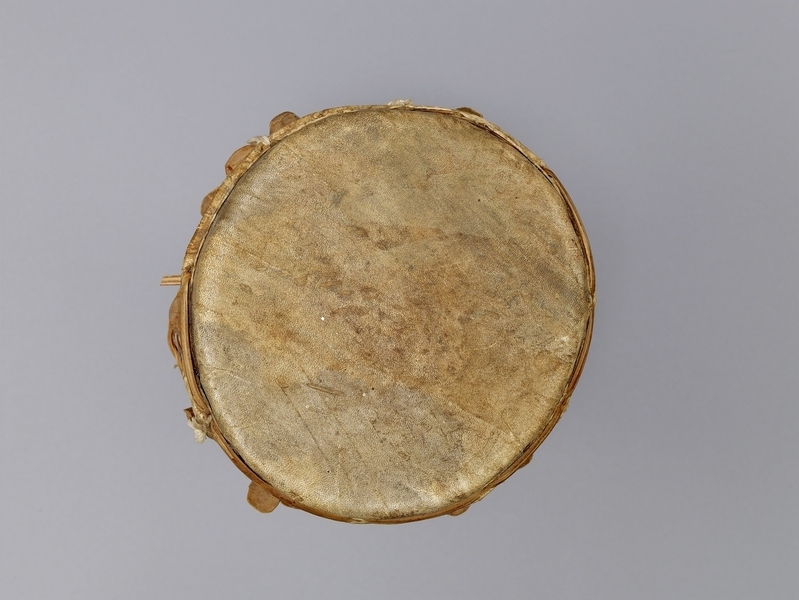Drum Item Number: 2704/41 from the MOA: University of British Columbia



Description
Drum with three long legs and a skin top. The drum is painted with a reddish pigment. The circular skin top is stretched down and tied with bark to a double woven band around the middle of the drum. Into the woven band are pushed nine carved stakes. The stakes are short, pointed and unpainted. The drum is round and one piece with three thick, irregularly carved legs.
History Of Use
Wedge and ring style or friction drum (uni membranophone) used by the Ekpe or Ngbe (leopard) secret society. The society was said to have originated in the Old Calabar region in the seventeenth century, spreading to and gaining prominence in southeastern Cameroon, or the grass lands, by the nineteenth or twentieth centuries among the Bamileke peoples. The drums of the Leopard secret societies played a significant role in rituals and performances, as they represented the voice of the Ngbe. Only designated initiated members were able to play them. Societies where the drums are played still exist today, but the roles of them have been significantly changed or diminished due to colonialism and Christian missionary influence.
Item History
- Made in Nigeria
- Owned by Laurice Durham-Aldridge and Anthony Durham-Aldridge
- Owned by Carmel Magnusson and Terry Aldridge before March 19, 2008
- Received from Carmel Magnusson (Donor) and Terry Aldridge (Donor) on March 19, 2008
What
Who
- Culture
- Efik ?
- Previous Owner
- Laurice Durham-Aldridge, Anthony Durham-Aldridge, Carmel Magnusson and Terry Aldridge
- Received from
- Carmel Magnusson (Donor) and Terry Aldridge (Donor)
Where
- Holding Institution
- MOA: University of British Columbia
- Made in
- Nigeria
When
- Ownership Date
- before March 19, 2008
- Acquisition Date
- on March 19, 2008
Other
- Condition
- good
- Current Location
- Case 98
- Accession Number
- 2704/0041